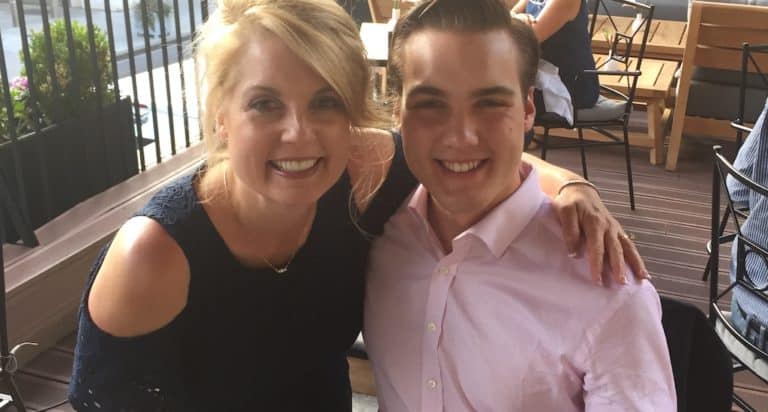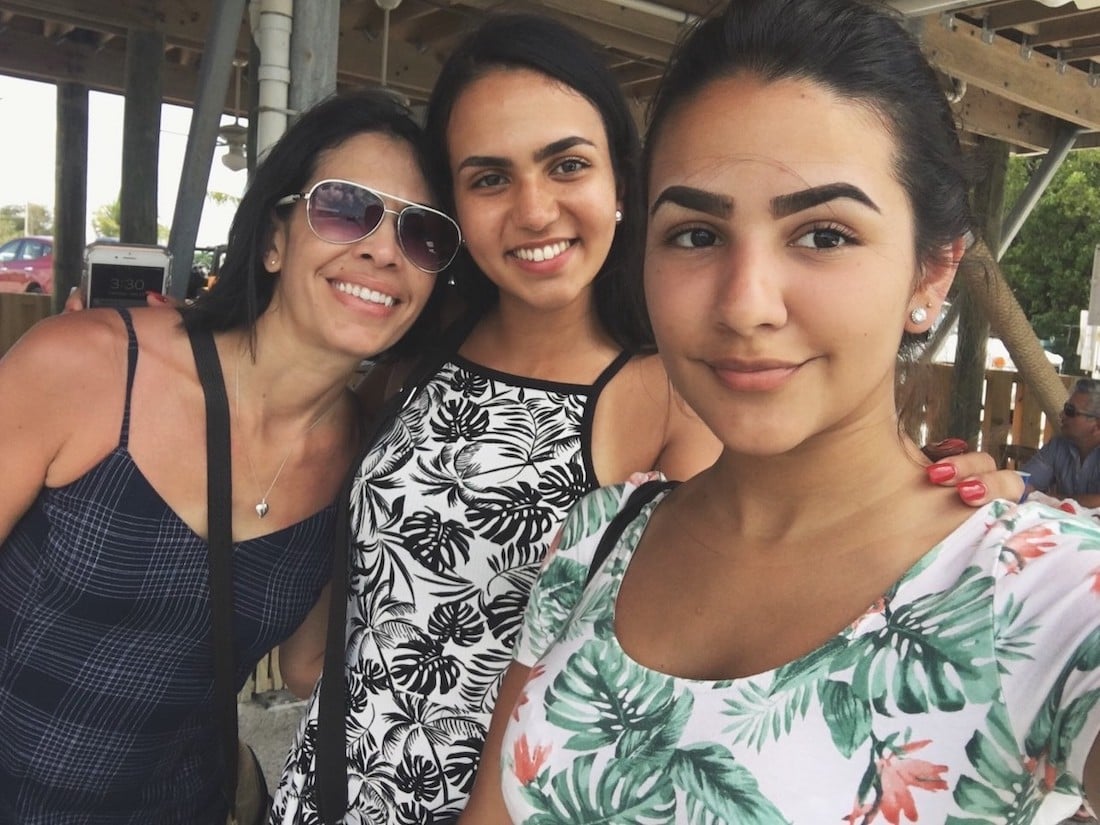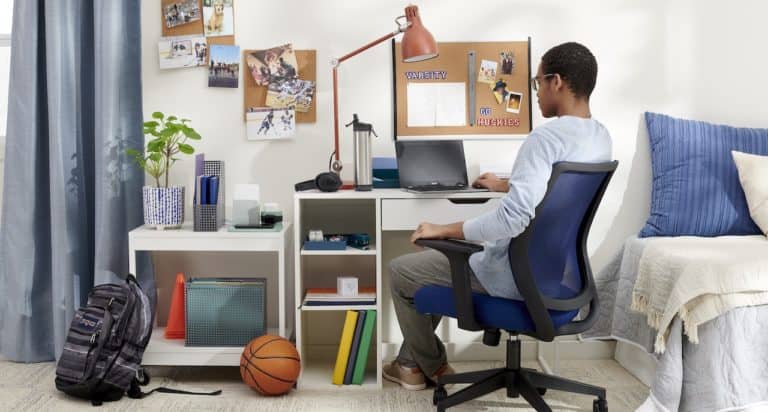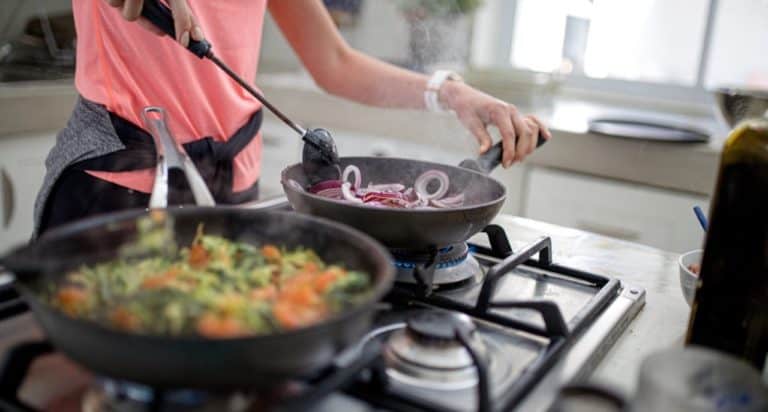First thing in the morning we check our trucks to make sure all supplies are there and not expired. We make doubly sure we have extra masks, gloves, eye protection, and gowns. After that we take everything out and decontaminate it as much as possible. Yes, it was just done after the last call, but we would rather do too much than too little. Everything fabric gets saturated with disinfectant. Everything solid gets wiped down with bleach water. We do the cab too. This process takes over two hours.
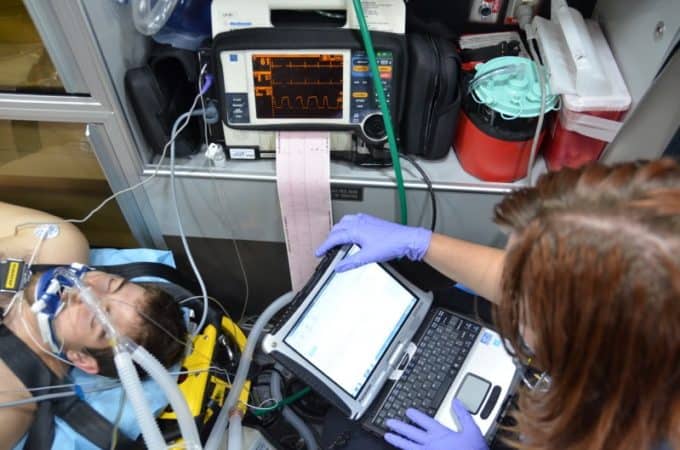
Tones drop. A call comes in and the dispatcher says the words we dread hearing. “Patient meets protocol.” This means the patient has Covid symptoms. We get into the truck and go, discussing how to handle any scenario we can think of when we get there. We put on N95 masks, goggles, and gloves before we get out of the truck. We save our gowns because we only have so many. Those are reserved for patients with positive tests and those quarantined due to exposure. We will come back and get them if our patient meets that criteria.
We carefully consider what we absolutely have to take in depending on the nature of the call. We used to bring our blue bag (respiratory gear) and heart monitor at a minimum. Now we only take what we have to out of the truck.
One person goes in and assesses the patient from ten feet away. We have them walk outside if at all possible. We do not enter the house unless we have to. We do not expose our partner unless we have to. This time the patient is a 66-year-old having difficulty breathing. He is bed bound due to a previous stroke. We both have to go in and take the stretcher to move him. We ask everyone else to leave the room. They don’t want to, of course, and argue a bit but eventually go.
We place a surgical mask on the patient. This to to protect us. The virus can still enter the surgical mask, but we don’t have enough N95s for the patients too. We take vitals and place him on oxygen. We move him to our stretcher using the sheet. Family is again hovering. I don’t blame them, and normally I would be reassuring them that I will take the best care of their loved one, but this time I have to ask them again to leave.
We strap the patient to the stretcher and make our way to the ambulance. Only I get in the back and shut the doors. My partner cannot come in and help with the EKG, IV, oxygen, or any of the other things that must be done before we leave. I don’t want them exposed anymore than they have to be. I do all this alone which takes more time than usual. My partner stands outside the ambulance feeling useless. None of us are used to just standing around. I tell my partner to go. We cannot take any family members with us. We know the hospital will not let them in anyway.
I debate whether or not to give my patient a nebulizer treatment. He could use one, but is he bad enough that he absolutely has to have it? The last thing I want to do is nebulize this virus into the sealed 8 ft box we are in. It is absolutely killing me that I have to think like this. Before this, it would have been a given. I hold off as long as I can and then give the treatment while placing a surgical mask over the nebulizer. It will have to do.
The closest hospital is half an hour away, but it’s small and I know they won’t be able to handle this gentlemen’s condition. I make the decision to transport to the hospital an hour away because he needs advanced care. This means I’m exposing myself for twice as long. Again, I hate to even think that way. I monitor my patient, sitting next to him instead of behind like I would with a non-critical patient. Does he need to be intubated? Really need it or can I hold off and let the hospital do it in a negative pressure environment to limit my exposure?
I don’t want to wait too long, but I know I can’t jump the gun either. I carefully monitor his vitals, watch his breathing, and listen to his lungs. I lay out everything I would need to intubate alone in case I need to. Meds, tools, tubes, more monitoring equipment…Any change at all in his condition, and I am ready to go.
Thankfully my patient stays stable as we travel to the hospital. I call the hospital and brief them on what we are bringing. We arrive and someone meets us in the ambulance bay to take our temperatures before we can go into the hospital with this man who is still struggling to breathe. We finally get to go in and are met directly inside the door by staff to assess the patient’s Covid risk.
They have our information but they only have so many negative pressure rooms and must triage for them. They decide he meets the criteria and we wheel him into the room. Everyone leaves while we move him over to the hospital bed to minimize exposure from moving him. I give my report. They ask if family is on the way as this gentleman is in bad shape. He’s had a stroke. He is bed bound. He is unresponsive. How much does the family want them to do for him?
I know they’re trying to conserve resources for patients with a better chance of a positive outcome. It is heartbreaking. I go back out to my truck still wearing my goggles, masks, and gloves. I grab a decontamination bucket the hospital has graciously made for us on my way out. We repeat the decontamination of the truck that we did this morning. It takes us out of service for another hour. My partner and I spray each other down with Lysol while spinning in a circle. Think like you would with bug spray. We leave PPE on for this. Lysol tastes gross!
Finally I can take all of my PPE off. It’s hot, uncomfortable, and limits my field of vision. First I remove my goggles and clean them with disinfectant wipes. Then I remove my mask and place it in the oxygen tank compartment on the outside of our truck. This patient has not tested positive or been around anyone with the virus so I will reuse my mask until my shift is over. Again, we only have so many. Then I remove my gloves and throw them away.
Now it’s time for the hour drive home. My partner and I talk about the call. What could we have done better? Could we have done anything else to reduce our risks? Did you remember to pull the seat belts out and spray those down? Did we get between the cracks of the seats well enough? What about all the fabric on bags? We worry. That one call took us out of service for over 3 hours. We have three trucks to cover the whole county. We pray we don’t get more than we can handle. We pray we have enough time to decontaminate our trucks between patients before we rush back for the next one. We pray we have time to decontaminate ourselves.
We get back to the station and restock everything we used out of our truck. We’re about to shower and change clothes when another call drops. Everyone else is already on other calls. We have to go. This time it’s an accident; two patients. They were out for a drive to the beach because they needed to get out of the house. They were just planning to drive straight there and straight back without coming into contact with anyone else. Now they are with me. I’ve decontaminated the best I can, but I am not naive enough to believe I got every little bit. These two have now been exposed. They will expose the hospital staff. They will go home and expose everyone there.
We shake our heads at the needlessness of it all. The cycle begins again and continues until the end of our shift. It may be 24 hours, it may be 48, it may be longer if we are needed. We pray that none of our own get sick. We are afraid we would be short staffed and couldn’t cover all the calls we get. We worry about the families we come home to knowing we have been exposed even if it is considered low risk because we had PPE. We place our N95 masks in paper bags with our names on them. We know we will have to use them again when we run out of new ones. We hope the virus dies on them before we need them again. We shower, change, throw our uniforms in the washer at work, and go home. We don’t want to bring anything home to our families.
Some of us go home to young children. I go home and greet my wife. I shower and change again before coming into the same room as her. My children are not here. I’ve made the difficult decision to have them shelter in place with people who are not going out into it every day. They are at least old enough to understand. We talk via FaceTime and that’s it. I go to bed. I may get a day off to rest then it’s back at it again. I wonder about my patients. How they are doing, if they will make it. I wonder and worry about their families. How they are coping without even being able to even visit their loved one?
I feel good that I am needed. I feel good that I can make a difference. I am terrified of bringing this home. I am heartbroken that I cannot hug my children or even see them face to face. I am grateful we still have the technology to communicate. So many thoughts and feelings. I try to shut it off so I can sleep.
Finally sleep takes me and I dream. I dream of running out of supplies. I dream of having to triage patients and deciding who to treat and who to let go. I dream of overrun hospitals. I dream of a true society collapse with no police, no fire department, no EMS, no one to help at all because everyone is sick. No power. No water. Dreaming is worse than being awake.
I wake up in a cold sweat, shower, and dress in a fresh uniform for my next shift. I want to stay home. To stay safe. To be with my family. But people need me and I will be there until I can’t anymore. I get in my car and drive to the station.
Then I do it all again and again. This is my life right now. It will pass.
We will recover. Staying home will help it pass more quickly. Going out could mean this goes on for months at the very least. No exceptions.
The author of this post wishes to remain anonymous.
More to Reading:
What to Do When Your Teen Isn’t Taking Social Distancing Seriously

